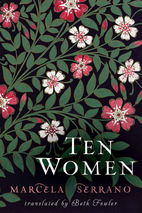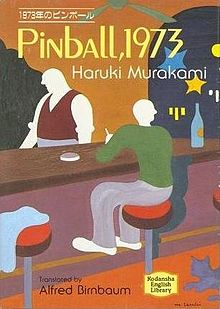I’ve just finished Boris Vian‘s J’irai Cracher Sur Vos Tombes [I Spit On Your Graves], and while reading I was intrigued to learn that it was originally published as a pseudo-translation*, that is to say Boris Vian presented himself as being the translator, the original being written by a certain Vernon Sullivan, when in fact Vian wrote it himself and Sullivan is just a pseudonym.
Boris Vian was a writer, poet, jazz musician, translator, critic actor, inventor and engineer (yes, all that!). Early in the summer of 1946 he met a young publisher, Jean d’Halluin, who for a bet asked him to write a book like Henry Miller‘s Tropic of Cancer. Vian wrote J’irai cracher … in two weeks from August 5th-23rd, plagiarising the style of American romans noirs. Set in the U.S. South, it deals with heated racial and sexual conflict; Vian’s intention was to denounce the racism and precariousness that African-Americans suffered from. It went on to sell more than half a million copies, but its erotic content led to it being banned in 1949 for immorality. (In 1959 Vian, aged 39, died of cardiac arrest during the first projection of the film based on the novel – a version of which highly disapproved). This experience as a pseudo-translator led to Vian becoming the real translator of noir writers such as Chandler, Cheyney and Cain.

Boris Vian
But what is the point of a pseudo-translation? In his Brave New Words blog BJ Epstein has the following to say:
In his book Descriptive Translation Studies and Beyond Gideon Toury defines pseudo-translations as “texts which have been presented as translation with no corresponding source texts in other languages ever having existed – hence no factual ‘transfer operations’ and translation relationships”. In other words, it is a fake translation. Mr. Toury suggests that this is a “a convenient way of introducing novelties into a culture” and is especially useful “in cultures reluctant to deviate from sanctioned models and norms.” He also mentions that there may be times when either translation itself or else a particular type of literature has prestige, so authors try to get in on the action, as it were, by creating pretend translations.
In Is That A Fish in Your Ear David Bellos mentions pseudo-translation in his discussion of the indistinction that can exist between original and translated texts. Some of the examples he mentions are: Fingal, an Ancient Epic Poem in Six Books (1762) by James McPherson, Horace Walpole‘s The Castle of Otranto (1764, regarded as the first gothic novel), Emmanuel Lifshitz’ twenty-three poems written as ‘James Clifford’, Andreï Makine‘s first three novels, and The Letters of a Portuguese Nun (1669) by Guilleragues, the latter not being unmasked as a hoax until 1954!
While Makine’s and McPherson’s pseudo-translations were purely aimed at getting their books printed, the reason for most pseudo-translations is to put distance between the real author and what they want(ed) to say. Many authors, especially in the 18th century, were criticising their governments in a disguised fashion; our more tolerant societies today might explain why pseudo-translations are less common now. Another advantage of a pseudo-translation is to make the language, and not the author, the most important element of a book.
Some other examples of pseudo-translations:
- Don Quixotte 1605; ‘Arabic’ to Spanish) by Cervantes
- Lettres persanes [The Persian Letters] (1721; French) by Montesquieu
- Cleveland (1731; ‘English’ to French) by Abbé Prévost
- Candide (1759; ‘German’ to French) by Voltaire

Frontispiece of Voltaire’s Candide (Wikipedia)
- Clara Gazul plays (1825; ‘Spanish’ to French) and Guzla (1827; ‘Serbian’ to French) by Prosper Merimée
- Le Livre de Jade (1867; ‘Chinese’ to French) by Judith Gautier
- Les Chansons de Bilitis [The Songs of Bilitis] (1894; ‘Ancient Greek’ to French) by Pierre Louÿs
- Di Koningin fan Skeba (1898; Afrikaans) by SJ Du Toit
- Three novels written by Raymond Queneau as pseudo-translations of Sally Mara, an Irishwoman, translated from English by ‘Michel Presle’.
- O Novo Gulliver (1961; possible pseudo-translation from Spanish to Portuguese) by ‘Tingusa Gelany’
- White Poems (1965) and Dream Masters (1989) (poems; ‘Greek’ to English) by David Solway
- The Beijing of Possibilities (2009; Chinese to English) by Jonathan Tel
Many more ‘translations’ probably exist that have never been unmasked as originals – and vice versa. All this goes to prove that in the absence of a giveaway, readers are generally unable to tell whether a text is an original or a translation. Makine only revealed the truth in order to be eligible to win the Goncourt Prize, and Walpole only when he would have had to produce the Italian original.
Do you know of any other pseudo-translations? Have you ever read one, before or after knowing it was a pseudo-translation?
*pseudo-translation – not to be confused with pseudo-localisation (sometimes called pseudo-translation) which is a software testing method that is used to test internationalization aspects of software.
Suggested links:
- Review of I Spit On Your Graves by Chris Petit in The Guardian, Saturday 4 August 2001.
- A Collection of Pseudotranslations & Pseudotranslations and Anti-Plagiarism – posts on Brave New Words blog.
- Modern Homer unmasked as a mythical figure by Ben Downing in The Guardian, Saturday 24 March 2001 (David Solway affair).
- Pseudonymes, traductionymes et pseudo-traductions [in French] – Erudit, Volume 30, numéro 1 (88), automne 2004, p. 93-103. (In this article I also learnt of the existence of the neologism traductionyme meaning le nom de plume employé par un traducteur [pseudonym used by a translator]. However another reference I found defined it as traduction du véritable nom dans une langue étrangère [translation of a real name into a foreign language ]).
- Vernon Sullivan ou les Pseudo-traductions de Boris Vian [in French] by Isabelle Fakra – L’art d’aimer, Revue d’essais critiques. Interesting article, discusses some of the literary devices used by Vian in his pseudo-translations.
- Pseudo-traduction : la mise en scène de l’altérité [in French] by Isabelle Collombat – Le Langage et l’Homme, vol XXXVIII, n° 1 (juin 2003).
- Sur les Sources du Livre de Jade de Judith Gautier [in French] by Ferdinand Stocès, Revue de littérature comparée, 2006/3 no 319, p. 335-350.
- Scénographies de la Pseudo-traduction [in French] – Detailed presentation of an event which took place in November 2011 in Leuven, Belgium.
- My post about Is That A Fish in Your Ear.

















